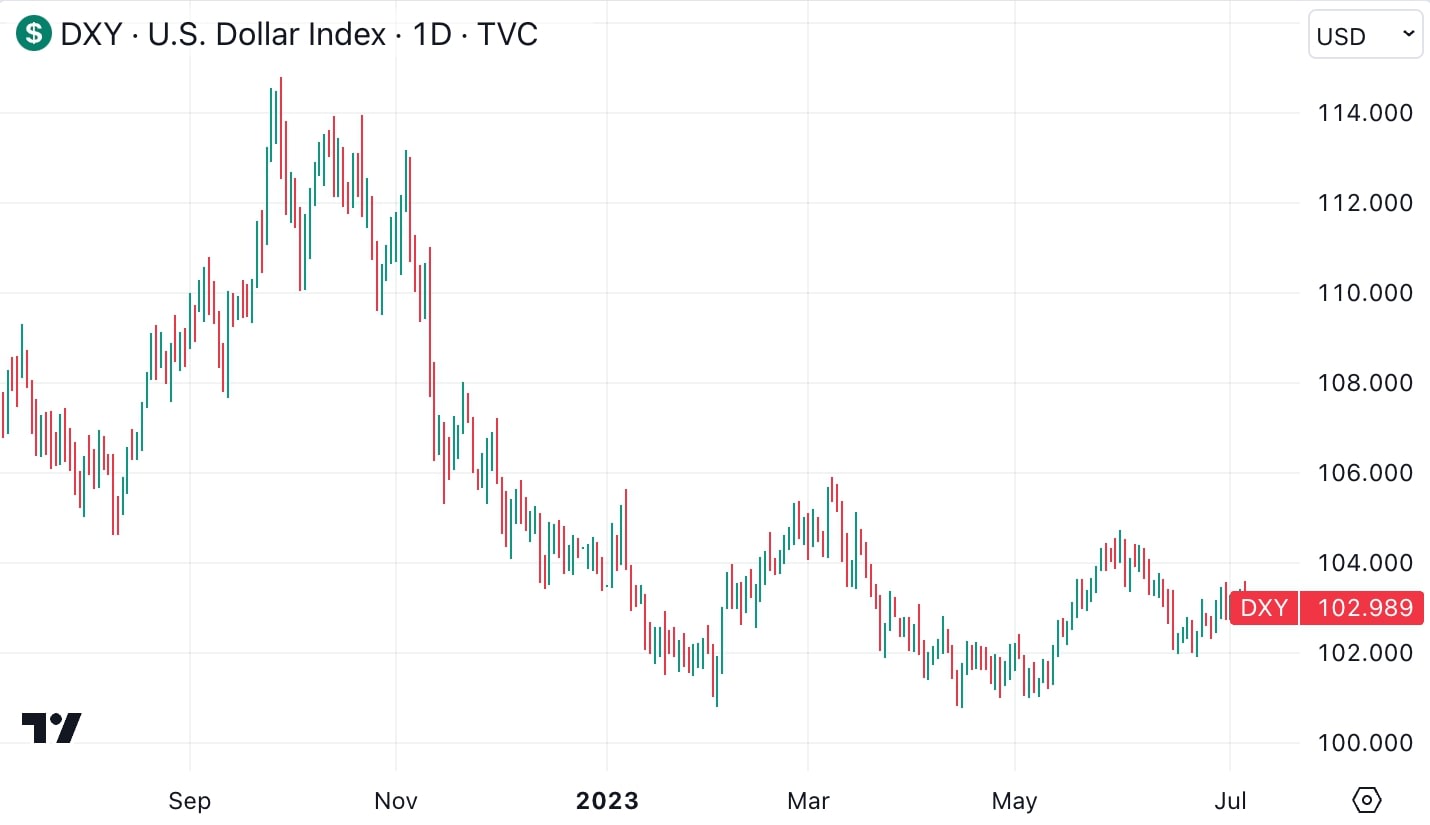With all eyes on the Federal Reserve because of raising interest rates, the US Dollar Index by default becomes quite a sight. Or, rather, a mirror of geopolitical events? No matter the definition, let’s reflect on what is happening to DXY now and what might be in store for it.
Since the start of 2023, the dollar index has been losing 0.65%. In other words, the US currency spent the first half of this year trading without a clear trend. By the end of Q2 2023, the DXY was trading around $103 – slightly lower than at the close of 2022. The dollar itself weakened by 1.4% in June but was up 0.78% at the end of the second quarter.

The reason behind consists of two words – ‘Federal’ and ‘Reserve’. In June, the Fed left its target federal funds rate unchanged at 5-5.25% but warned that the rates could rise to 5.6% by the end of the year if the inflation wouldn't slow down. The regulator stated their goal to achieve 2% inflation as soon as possible and confirmed the advisability of another interest rate hike this year. Such policy supported the bullish sentiments on the market.
It seems that the options for strengthening the dollar further remain limited. Indicator of the price increase for all domestic personal consumption, known as PCE, demonstrated a slowdown in inflationary pressures at the end of June. If the Consumer Price Index (CPI) also shows a downward trend, the Fed will have good reason to reconsider its plans and extend its pause in raising rates until the end of the year. To stay up to date with important events in the financial world, you might want to check the economic calendar.
Such a strict attitude from the regulator was creating support for the dollar. However, the possibility remains that after the rate hike in July, the Fed may announce the end of the current national monetary policy tightening cycle. Not to forget that the rate hike in July is already fully priced in and, therefore unlikely to lead to an even more remarkable rise in the dollar.
US GDP data released on June 29 showed annual growth of 2.0% over the previous quarter, rather than the 1.3% preliminary estimate. Such a significant upward revision suggests that the US economy is coping well with high borrowing rates - this eases fears of a fast-coming recession and keeps the dollar from weakening.
Thus, although there is little doubt that the US interest rate will be raised again in July, the chances of another price adjustment before the end of the year remain. With this in mind, short DXY positions remain a priority for many investors.
